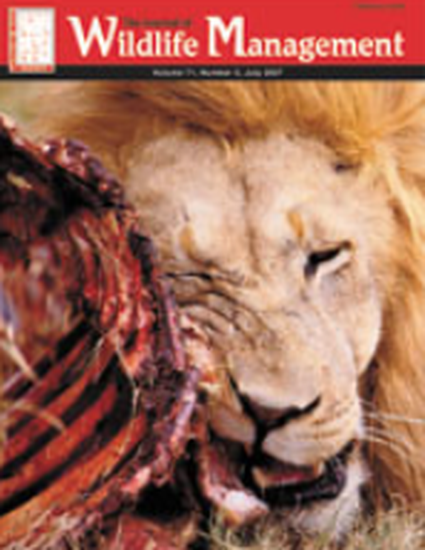
Article
Effects of Winter-Feeding on Mule Deer in Northern Utah
Journal of WIldlife Management
(2007)
Abstract
During severe winters, mule deer (Odocoileus hemionus) concentrated on ranges in poor condition can experience high mortality. Winter-feeding programs have been implemented to mitigate this mortality. We studied effects on body condition, mortality, fawn production, and migration of mule deer following winter-feeding in the Cache-Wasatch Mountains of northern Utah, USA. Fed deer exhibited 12% higher live body-condition indices both years (main effect feed: F<sub>1,7.32</sub> = 5.39, P = 0.052), lower mortality (33% vs. 55%: χ²<sub>1</sub> = 4.58, P < 0.05), and produced more fawns (19 fawns:18 fed F vs. 11 fawns:12 nonfed F; t<sub>27.2</sub> = 2.20, P < 0.036) than nonfed deer. Fed deer migrated later in spring 2004 (x̄ = 13 Apr) than nonfed deer (x̄ = 24 Mar; t<sub>34</sub> = 3.25, P = 0.003). Fed deer spent more time on winter range in 2003-2004 (x̄ = 157 d) than nonfed deer (x̄ = 121 d; t<sub>20</sub> = 3.63, P = 0.002), and more time on winter range for both winters combined (fed deer x̄ = 321 d, nonfed deer x̄ = 257 d; t<sub>27</sub> = 3.29, P = 0.003). Concomitantly, wildlife managers need to recognize that any possible benefits accrued to mule deer populations in terms of increased nutritional status as a result of winter-feeding programs may be mitigated by altered timing of migration and increased duration of use of seasonal ranges by fed deer.
Disciplines
Publication Date
2007
DOI
https://doi.org/10.2193/2006-202
Citation Information
Terry A. Messmer. "Effects of Winter-Feeding on Mule Deer in Northern Utah" Journal of WIldlife Management Vol. 71 Iss. 5 (2007) p. 1440 - 1446 Available at: http://works.bepress.com/terry-messmer/235/
